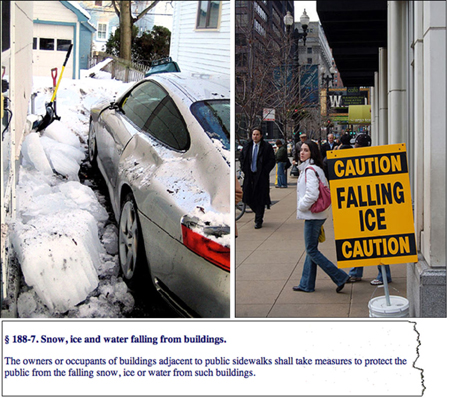
By Brian Stearns, Alpine SnowGuards
Last time, in part one of this two-part series, we talked about snow guards and customer expectations, specifically in reference to the installation and use of pad-style snow guards.
This time let’s shift the focus to pipe-style snow guards.
 Pipe-style snow guards act as a barricade system, preventing large chunks of snow and ice from sliding off a roof in the form of a roof avalanche. Originally used on commercial
project applications, there are now many homeowners who are actively choosing pipe-style snow guards when making a conscious decision to protect the area immediately surrounding their home from falling snow and ice.
Pipe-style snow guards act as a barricade system, preventing large chunks of snow and ice from sliding off a roof in the form of a roof avalanche. Originally used on commercial
project applications, there are now many homeowners who are actively choosing pipe-style snow guards when making a conscious decision to protect the area immediately surrounding their home from falling snow and ice.
There are numerous custom forms that pipe-style snow guards can take on – from elaborate, decorative wrought iron fences that are common all across Europe, to logs (yes, logs), to Victorian-era rooftop “Yankee Gutters”, which are basically
on-roof, site-built gutter systems that utilize a board fastened to the roof slope to form a gutter. Yankee gutters (see examples, 1st left image) were simpler to install in that all that needed to be done was to set a board at right angles to the roof slope, and
support it with the use of brackets. While these gutter systems were intended to manage rain water, they also, unintentionally, functioned as snow retention systems.
Less common are unintended fences and barriers – things like electrical conduit mounted on rooftops, gas and plumbing lines, support cables for antennas, the upslope-edge of solar panels, skylight frames, rooftop ductwork, mechanicals, etc.
Any rooftop obstruction (as shown in the 2nd photo at left) that can retain snow and ice will retain snow and ice. Be sure to either engineer a proper support or design the snow retention solution to protect these rooftop obstructions from being damaged.
Several years ago, I worked on a military project at Westover Air Reserve Base in Chicopee, MA. Here, there were World War II era airplane hangars that looked like enormous Quonset huts. The owners decided to expand the buildings by building additions
on either side of the barrel roof construction.
These additions had flat roofs that snow and ice would accumulate on as it slid off of the adjacent barrel roof. The flat roof sections had parapet walls around them. Snow and ice that had crept off the barrel roof piled up against the parapet (roof obstruction) and had actually started to push the wall off the building addition! Shown (3rd image at left) is a photo of that very project, where you can see the flat-roof building additions
I‘m referring to. (The installation of several rows of our PP115 pipe-style system for membrane roofing alleviated this issue.)
Needless to say, the placement of pipe-style snow guards is extremely important.
Strategic Placement Of Pipe-Style Snow Guards (referenced by the accompanying images)
First row along the eave, above the line of the exterior supporting wall, as shown in the 4th photo at left.
Overhangs may not be constructed to properly hold additional weight, and heated overhangs may have ice damming issues (the installation of snow guards will not cause or reduce the presence of ice damming, as ice damming is a direct result of a problem
with insulation / circulation).
Additional rows spaced along the bottom third to two thirds of the roof, as shown in the 5th photo at left.
Multiple rows of snow guards. The bottom left graphic helps explain why multiple rows are sometimes warranted.
Generally speaking, pipe-style snow guards should always be the first choice for rooftop snow management. There are several reasons for this, all of which we will explore in a future posting.
Until then, feel free to reach out to me directly at brian@alpinesnowguards.com. Like the rest of my staff, I’m always happy to help.